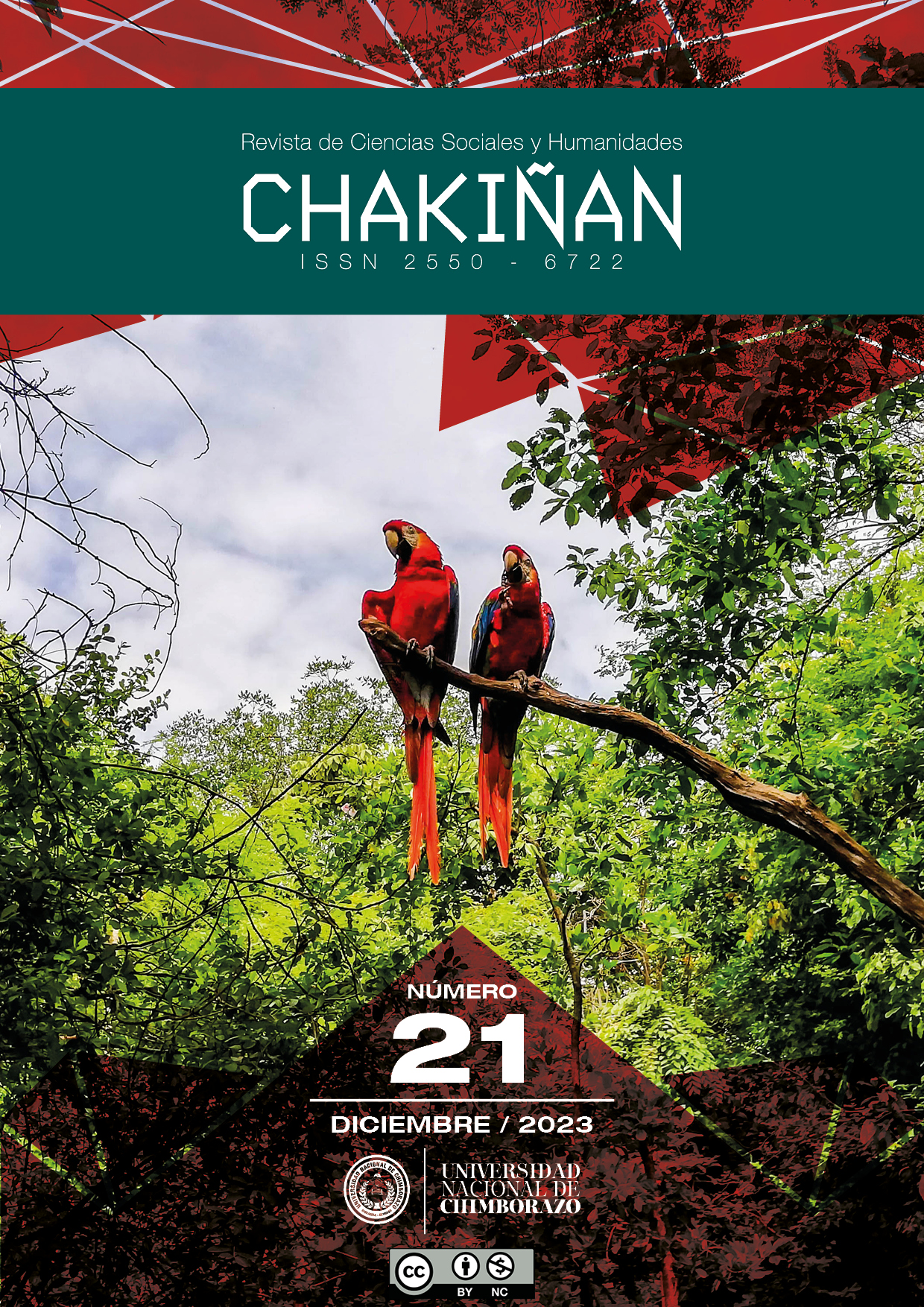THE PROOF OF EQUALITY OF TRIANGLES. CONSIDERATIONS FOR BASIC SECONDARY
Main Article Content
Abstract
The topic of the equality of triangles, the fundamental basis for the study of geometric contents, is taught and consolidated in the eighth grade. The present research proposes the feasibility of applying the General Heuristic Program as an alternative for the treatment of the teaching content in the demonstrations of equality of triangles in the eighth grade of Basic Secondary School. The dialectical materialist method was used with the predominance of the quantitative approach and assumed a study sample of 23 students from an intentionally selected group of eighth grade. Observation, analysis of the product of the activity, and interview were applied together with other methods and techniques. These made it possible to verify the difficulties in the teaching-learning process of the contents related to Unit 2 Plane geometry and calculation of bodies, specifically on the topic of equality of triangles. This is complex for the learners since they must apply concepts, propositions as well as procedures. For all these reasons, it is necessary to use the General Heuristic Program, which is incorporated through demonstration exercises. The partial evaluation of this work gave a positive result, which shows the effectiveness of the proposal.
Downloads
Article Details
Conference Proceedings Volume
Section

This work is licensed under a Creative Commons Attribution-NonCommercial 4.0 International License.
Responsibility of the authors:
The authors are responsible for the ideas and data collected in the manuscripts. They are additionally accountable for the fidelity of the information, the correction of the citations, the right to publish any material included in the text, and the presentation of the manuscript in the format required by the Journal (WORD template). A manuscript forwarded to CHAKIÑAN must not have been published before, nor must it have been submitted to another means of publication.
Copyright:
Published articles do not necessarily compromise the viewpoint of the CHAKIÑAN JOURNAL. The Journal is aligned to the policy of the licence de Creative Commons Reconocimiento-No comercial 4.0 Internacional (CC BY-NC 4.0). Each author retains the right to the paper published in the Chakiñan journal.
Privacy statement
The personal data and email addresses entered in this magazine will be used exclusively for the purposes stated by the publication and will not be available for any other purpose or person.
How to Cite
Share
References
Algarabel, S., Dasí, C., Gotor, A., & Perea, M. (1996). Solución de problemas: una revisión del uso de heurísticos y una evaluación de su utilización en Matemáticas. Revista Española de Pedagogía, LIV(203), 143-165. https://www.jstor.org/stable/23765698
Álvarez, M., Almeida, B., & Villegas, E. V. (2014). El proceso de enseñanza-aprendizaje de la Matemática. Documentos Metodológicos. Editorial Pueblo y Educación.
Arnaiz, I., García, J. A., & Díaz, M. (2020). Concepción didáctica para aplicar íntegramente las habilidades matemáticas en la solución de ejercicios y problemas. Revista Educación y Sociedad, 18(3), 16-29. https://dialnet.unirioja.es/servlet/articulo?codigo=8329319
Arnaiz, I., Ledo, O, Rojas, R. T., & García, J. A. (2014). La dirección del proceso de enseñanza-aprendizaje de la Matemática para potenciar la integración de los contenidos. Universidad de Ciego de Ávila “Máximo Gómez Báez”. https://www.researchgate.net/publication/352284997
Ballester, S. (2018). Didáctica de la Matemática. Editorial Universitaria Félix Varela.
Ballester, S., Santana, H., Hernández, S., Cruz, I., Arango, C., García, M., Álvarez, A., Rodríguez, M., Batista, L. C., Villegas, E., Almeida, B., & Torres, P. (1992). Metodología de la Enseñanza de la Matemática. Editorial Pueblo y Educación.
Bernardis, S., & Moriena, S. (2021). Geometría Dinámica & Demostraciones Geométricas. Revista de Educación Matemática, (Número especial), 1-7. https://revistas.unc.edu.ar/index.php/REM/article/view/10407
Campistrous, L., & Rizo, C. (1996). Aprende a Resolver Problemas Aritméticos. Editorial Pueblo y Educación.
Che, J. (2007). Didáctica de la Matemática en la Secundaria Básica. Módulo III. Segunda parte. Maestría en Ciencias de la Educación. Mención en Educación Secundaria Básica. Editorial Pueblo y Educación.
De Armas, N., & Valle, A. (2011). Resultados científicos en la investigación educativa. Editorial Pueblo y Educación.
Fernández, H., & Gamboa, M. E. (2018). La didáctica de la geometría en función del desarrollo tecnológico de la pedagogía contemporánea. Revista Pertinencia Académica, (6), 63-78. https://revistas.utb.edu.ec/index.php/rpa/article/view/2431
Gorina, A., & Berenguer, A. (22 al 24 de noviembre de 2017). La perseverancia en la resolución de problemas matemáticos [ponencia]. XV Congreso Internacional COMPUMAT, Universidad Tecnológica de La Habana “José Antonio Echeverría”, La Habana, Cuba. https://www.researchgate.net/publication/327270834
Hernández, R., Fernández, C., & Baptista, M. (2014). Metodología de la investigación, 6ta. edición. MacGraw Hill Education.
Iglesias, M. M., & Ortiz, J. (2019). La Demostración en Geometría desde una Perspectiva Didáctica. UNIÓN - Revista iberoamericana de educación matemática, 15(55). https://union.fespm.es/index.php/UNION/article/view/297
Lafaid, E. (2018). La geometría para la vida y su enseñanza. Revista de investigación, administración e ingeniería, 6(1), 33-61. https://doi.org/10.15649/2346030X.475
Llerena, C. V. (2020). Demostraciones geométricas, Euclídeas y no Euclídeas, mediadas por software dinámico y evaluadas bajo el modelo de Van Hiele en el proceso de nivelación emblemática [Tesis de maestría, Universidad de las Fuerzas Armadas]. Repositorio de la Universidad de las Fuerzas Armadas. http://repositorio.espe.edu.ec/handle/21000/22415
Lorences, J., Guelmes, E. L., & Salmerón, E. (2009). La concepción dialéctico materialista de los métodos en la investigación pedagógica. Revista Varela, 9(24), 17-30. http://revistavarela.uclv.edu.cu/index.php/rv/article/view/713
MINED. (2014). Matemática 8vo grado. Editorial Pueblo y Educación.
MINED. (2016). Programa de octavo grado. Ministerio de Educación.
MINED. (2021). Adaptaciones curriculares para el curso escolar 2020-2021. Educación Secundaria Básica. Ministerio de Educación de la República de Cuba. Editorial Pueblo y Educación.
Morales, Y., Rojas, R. T., & Arnaiz, I. (2022). La formación del pensamiento lógico desde la habilidad demostrar en el proceso de enseñanza-aprendizaje de la Geometría. Revista Mendive, 20(4), 1207-1218. http://scielo.sld.cu/scielo.php?script=sci_arttext&pid=S1815-76962022000401207
Polya, G. (1945). How to solve it? Rinchart and Winston Inc.
Quero, O. N., & Ruiz, A. M. (2021). Aprendizaje de un programa heurístico para la transferencia entre representaciones de objetos de la Geometría Analítica. Roca. Revista científico - Educacional de la Provincia Granma, 18(1), 378-399. https://revistas.udg.co.cu/index.php/roca/article/view/2923
Ramírez, J. (2021). Estrategias metodológicas para el desarrollo del pensamiento lógico en los alumnos de sexto grado de primaria. Editorial Pueblo y Educación.
Schoenfeld, A. (1989). A Brief and Beased History of Problem Solving. Berkeley.






